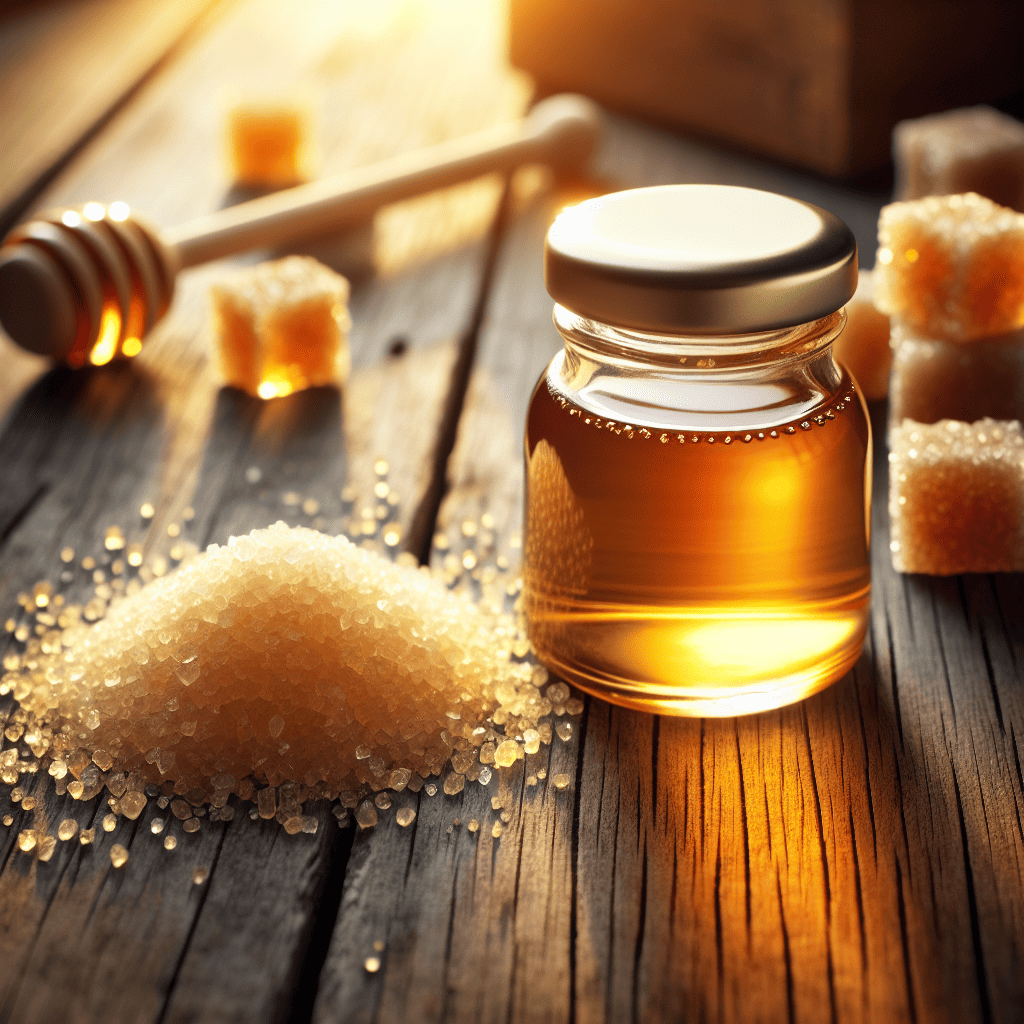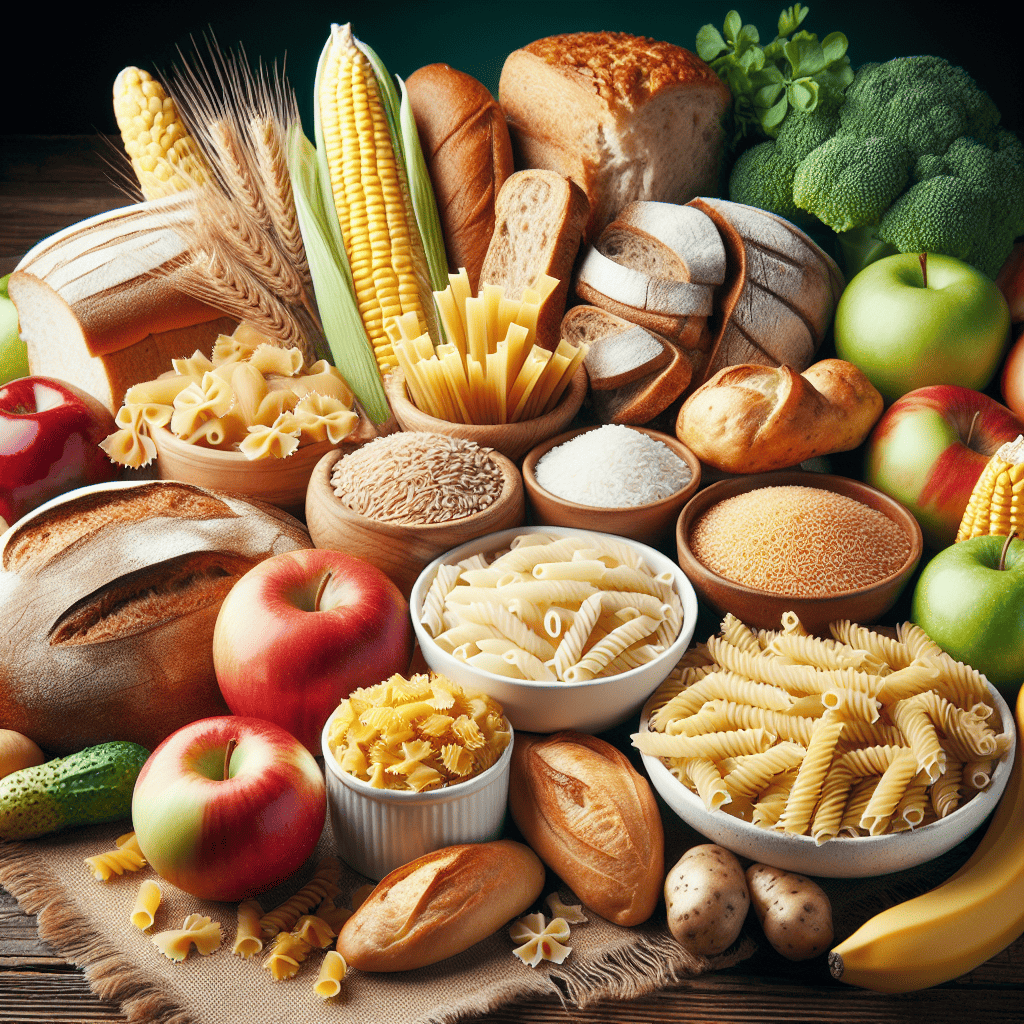Introduction: Glucose honey, also known as glucose syrup, plays a crucial role as a sweetening and thickening agent in commercial food production. This comprehensive guide explores the uses of glucose honey, its nutritional content, and the recommended healthy amount to consume.
Table of Contents
What is Glucose Honey?
Learn about the origins and characteristics of glucose honey, a popular substance used in the food industry for its sweetening and thickening properties.
- Origins of Glucose Honey:
Glucose honey, or glucose syrup, is a versatile artificial sweetener that is derived from various sources such as corn, potatoes, barley, wheat, and sugar. Unlike natural honey produced by bees, glucose honey is manufactured through the hydrolysis of starch, resulting in a clear and sweet syrup. This syrup is highly viscous and serves as a key ingredient in many food products due to its ability to enhance sweetness levels and provide a smooth texture.
The production of glucose honey involves breaking down the starch molecules present in plants like corn or wheat, using enzymes to convert them into simpler sugar forms. This process results in a concentrated sweet syrup that is easy to blend into different food items. Glucose syrup serves multiple functions in the food industry beyond sweetening, such as preventing crystallization in candies and increasing moisture retention in baked goods. Its neutral flavor profile also makes it a popular choice as a sweetening agent in various recipes, where the focus is on sweetness without adding additional flavors.
Due to its widespread availability and affordability, glucose honey has become a staple ingredient in the food manufacturing sector. It is commonly found in products like confectioneries, beverages, canned fruits, sauces, and more. Additionally, it plays a vital role in the creation of ice creams, jams, and other sweet treats where consistent sweetness and texture are desired. The versatility and functional properties of glucose honey make it a valuable component in the culinary world, catering to various consumer preferences and industry needs.
- Properties of Glucose Honey:
Glucose honey, a combination of glucose syrup and natural honey, is a versatile ingredient that serves multiple purposes in the food industry. It acts as a sweetener, providing a natural and rich sweetness to various dishes and beverages. The blend of glucose and honey offers a well-balanced flavor profile that enhances the taste of a wide range of recipes, from baked goods to sauces and marinades. This natural sweetener is especially popular in the production of energy bars, cereals, and other snacks, where it provides both a sweet taste and a source of quick energy.
In addition to its role as a sweetener, glucose honey also functions as a thickener in many food products. Its high viscosity helps improve the texture and consistency of sauces, dressings, and confections. By adding glucose honey to recipes, food manufacturers can achieve the desired thickness and mouthfeel without compromising on flavor. This makes it a convenient option for creating smooth and luscious sauces or fillings that enhance the overall sensory experience of the final product. The thickening properties of glucose honey also make it an essential ingredient in the production of jams, jellies, and spreads.
Moreover, glucose honey is valued for its ability to retain moisture in food products, prolonging their shelf life and freshness. In baked goods, for example, the inclusion of glucose honey helps prevent the loss of moisture during storage, resulting in softer and more moist products for a longer period. This moisture retention capability also extends to other food items such as candies, granola bars, and meat products, where maintaining a moist and tender texture is crucial for consumer satisfaction. By incorporating glucose honey into formulations, food manufacturers can improve the overall quality and shelf stability of their products, ensuring that consumers enjoy fresh and delicious offerings.
Uses of Glucose Honey
Explore the versatile applications of glucose honey in both commercial food production and homemade recipes.
- Commercial Applications:
Glucose honey, a versatile ingredient in the food industry, is widely used in a variety of products ranging from canned goods to baked goods and malt syrup production. Its unique properties and characteristics make it a favorite choice among food manufacturers for different processing purposes. The sweet and distinct flavor of glucose honey adds depth and richness to the products, enhancing their overall taste and appeal. Its ability to blend seamlessly with other ingredients makes it an essential component in the creation of a wide array of food items.
Glucose honey’s compatibility and tolerance levels are what set it apart from other sweeteners and additives commonly used in food processing. Its ability to withstand high temperatures during baking processes without losing its nutritional properties makes it an ideal choice for creating baked goods with a desirable texture and flavor profile. Additionally, its long shelf life and stability make it a reliable ingredient for canned goods where preservation is crucial. The natural sweetness of glucose honey also reduces the need for excessive sugar or artificial sweeteners, making it a healthier option for consumers.
Furthermore, the production process of glucose honey involves careful extraction and purification techniques to ensure a high-quality end product. The meticulous processing methods help retain the beneficial nutrients and antioxidants present in honey, providing added health benefits to the final food products. Food manufacturers value the consistency and reliability of glucose honey in their products, as it delivers a consistent taste and quality that consumers appreciate. Overall, the versatility, compatibility, and nutritional value of glucose honey make it a valuable ingredient in the food industry, contributing to the creation of a wide range of delicious and appealing food items.
- Domestic Uses:
When it comes to utilizing glucose honey in homemade desserts, the possibilities are endless. This natural sweetener can be used in a variety of baked goods such as cakes, cookies, and muffins to impart a subtle sweetness. It can also be drizzled over pancakes, waffles, or French toast for a delightful touch of sweetness. When making frostings, glazes, or caramel sauces, glucose honey can contribute to a smooth texture and glossy finish, elevating the overall taste and appearance of the final product.
In the realm of beverages, incorporating glucose honey can add a unique flavor profile to drinks like iced tea and lemonade. Whether used to sweeten hot beverages like coffee or tea or blended into smoothies and milkshakes, glucose honey can dissolve easily, ensuring a consistent sweetness throughout the drink. Additionally, its liquid form makes it convenient to mix into cold beverages without leaving behind any residual granules, providing a seamless drinking experience.
Beyond desserts and beverages, glucose honey can be a secret ingredient in savory dishes, dressings, and marinades. Its subtle sweetness can balance out the acidity of vinaigrettes or be used to glaze meats like ham or chicken for a caramelized finish. The versatility of glucose honey extends to marinades for grilled vegetables or tofu, enhancing the flavors and creating a delicious caramelization when cooked. With its ability to enhance both sweet and savory dishes, glucose honey is a valuable addition to any home cook’s pantry.
Nutritional Information of Glucose Honey
Gain insight into the nutritional profile of glucose honey and understand its caloric and carbohydrate content in comparison to natural sugars.
- Caloric Content:
Glucose honey is a concentrated source of calories, providing about 3.4 calories per gram. This high-calorie content makes it a potent energy source, often used by athletes or individuals needing a quick energy boost. However, despite its calorie density, glucose honey has limited nutritional value. Unlike raw honey, which contains antioxidants, vitamins, and minerals, glucose honey is primarily a source of simple carbohydrates.
When comparing glucose honey to natural sweeteners like sugar or honey, it is important to note the differences in composition. Sugar, in its refined form, also provides about 4 calories per gram, while honey offers approximately 3.0 calories per gram. However, both sugar and honey contain a variety of compounds that contribute to their nutritional profile. Honey, in its raw form, contains enzymes, antioxidants, and small amounts of vitamins and minerals. On the other hand, sugar is devoid of any significant nutrients and is often referred to as ’empty calories.’ Glucose honey falls closer to sugar in terms of nutritional value, lacking the diverse array of beneficial compounds found in raw honey.
In conclusion, while glucose honey can serve as a quick source of energy due to its high calorie content, it lacks the nutritional benefits associated with natural sweeteners like raw honey. When incorporating sweeteners into your diet, it is essential to consider not only the calorie count but also the overall nutritional value. Opting for natural sweeteners like honey can provide additional health benefits beyond just adding sweetness to your foods or beverages.
- Carbohydrate Comparison:
Glucose, a simple sugar and the most basic form of carbohydrate, is an essential source of energy for our bodies. It is quickly absorbed into the bloodstream, providing a rapid burst of energy. Glucose is naturally found in various foods, including fruits, vegetables, and honey. Honey, a natural sweetener produced by bees from the nectar of flowers, contains a variety of sugars, with glucose being one of the main components. Glucose in honey plays a significant role in providing immediate energy due to its quick absorption by the body. Unlike complex carbohydrates that take longer to break down, glucose from honey can serve as a quick source of fuel, making it popular among athletes for a pre-workout energy boost. While glucose contributes to the caloric content of honey, it also adds to its nutritional value by providing immediate energy for the body to function efficiently.
In contrast to natural sugars found in fruits and vegetables, the carbohydrate content of glucose in honey is more concentrated. This higher concentration of sugars, including glucose, fructose, and sucrose, gives honey its distinctive sweet taste and provides a quick source of energy. However, the carbohydrate content in honey can vary depending on factors such as the floral source and processing methods. While natural sugars from fruits and vegetables also contain glucose, the fiber content in these foods helps slow down the absorption of sugar into the bloodstream, providing a more sustained release of energy. On the other hand, the rapid absorption of glucose from honey can lead to a quicker spike in blood sugar levels, which may not be ideal for individuals with diabetes or those looking to manage their blood sugar levels.
Overall, the carbohydrate content of glucose in honey contributes to its nutritional profile by offering a quick source of energy. While honey provides essential nutrients and antioxidants, its high sugar content, including glucose, should be consumed in moderation. When compared to natural sugars from fruits and vegetables, the concentrated carbohydrates in honey can offer a rapid energy boost but may not provide the same level of sustained energy due to the lack of fiber. It is essential to consider the overall sugar intake from various sources and choose a balanced diet to fulfill the body’s energy needs while maintaining overall health and well-being.
The Healthy Amount of Glucose Honey
Discover the recommended consumption levels of glucose honey to maintain a balanced and healthy diet, as outlined by reputable health organizations.
- Guidelines for Consumption:
When considering the appropriate quantity of glucose honey to include in daily dietary intake, it is essential to look at the recommendations provided by global health authorities. These recommendations are crucial in guiding individuals towards making informed and healthy consumption choices. Glucose honey, like any other sweetener, should be consumed in moderation to prevent excessive sugar intake, which can lead to health issues such as obesity, diabetes, and dental problems. The World Health Organization (WHO) suggests that sugars should make up less than 10% of total daily energy intake, with further benefits for health if this is reduced to below 5%. This includes all free sugars, which include glucose and fructose found in honey. Therefore, individuals should be mindful of the quantity of honey they consume daily to align with these guidelines to maintain a balanced and nutritious diet.
Apart from the WHO, other global health authorities also provide recommendations on sugar intake that can help individuals determine the appropriate quantity of glucose honey in their daily diet. For instance, the American Heart Association advises that women should consume no more than 6 teaspoons (25 grams) of added sugar per day, and men should limit their intake to 9 teaspoons (38 grams). This encompasses all sources of added sugar, including honey. By following such guidelines, individuals can better manage their sugar intake and reduce the risk of developing chronic health conditions associated with excessive sugar consumption. It is important to note that while honey does offer some nutritional benefits such as antioxidants and trace amounts of vitamins and minerals, it is still considered a source of added sugar and should be consumed mindfully within recommended limits.
In conclusion, being aware of the appropriate quantity of glucose honey to include in daily dietary intake is vital for maintaining overall health and well-being. By adhering to the recommendations set forth by global health authorities like the WHO and the American Heart Association, individuals can make more informed choices about their sugar consumption, including the use of honey. Balancing the sweetness of honey with other natural sources of sweetness in the diet, such as fruits, and being mindful of portion sizes can help individuals enjoy the benefits of honey without exceeding daily sugar limits. Ultimately, moderation and awareness are key when incorporating glucose honey into a healthy and balanced diet.
- Impact on Health:
Excessive sugar consumption can have a detrimental impact on health and well-being in several ways. High sugar intake is linked to various health issues such as obesity, type 2 diabetes, heart disease, and tooth decay. When sugar is consumed in large amounts, it can lead to weight gain as excess sugar is converted into fat in the body. This can increase the risk of obesity, which is a major risk factor for many chronic conditions. Moreover, a diet high in sugar can also contribute to insulin resistance, which is a key factor in the development of type 2 diabetes. In addition, high sugar intake can negatively affect heart health by raising blood pressure and increasing the risk of cardiovascular diseases. Furthermore, the bacteria in the mouth feed on sugar and produce acids that can erode tooth enamel, leading to cavities and tooth decay. Therefore, understanding the implications of excessive sugar consumption is crucial in maintaining good health and well-being.
It is essential to emphasize the importance of moderation and balanced nutrition in order to support overall health while still enjoying foods like glucose honey. Moderation is key when it comes to consuming sugar, as it allows for enjoying sweet treats without adversely affecting health. By practicing moderation, individuals can satisfy their cravings for sugary foods while minimizing the negative impacts on their health. Additionally, focusing on balanced nutrition is crucial for overall well-being. A balanced diet that includes a variety of nutrients such as protein, healthy fats, vitamins, and minerals is essential for supporting the body’s functions and maintaining optimal health. This means that while enjoying glucose honey or other sweet foods occasionally, it is important to ensure that the overall diet is well-balanced and includes a variety of nutritious foods.
In conclusion, understanding the implications of excessive sugar consumption on health and well-being highlights the importance of moderation and balanced nutrition. While sugar can add sweetness to foods and beverages like glucose honey, it is crucial to consume it in moderation to prevent adverse health effects. By making informed choices about food intake and focusing on a balanced diet, individuals can support their overall health and well-being. Practicing moderation and incorporating a variety of nutrients into the diet can help maintain a healthy lifestyle while still enjoying occasional sweet treats. Therefore, prioritizing moderation and balanced nutrition is key to supporting optimal health and well-being in the long run.




